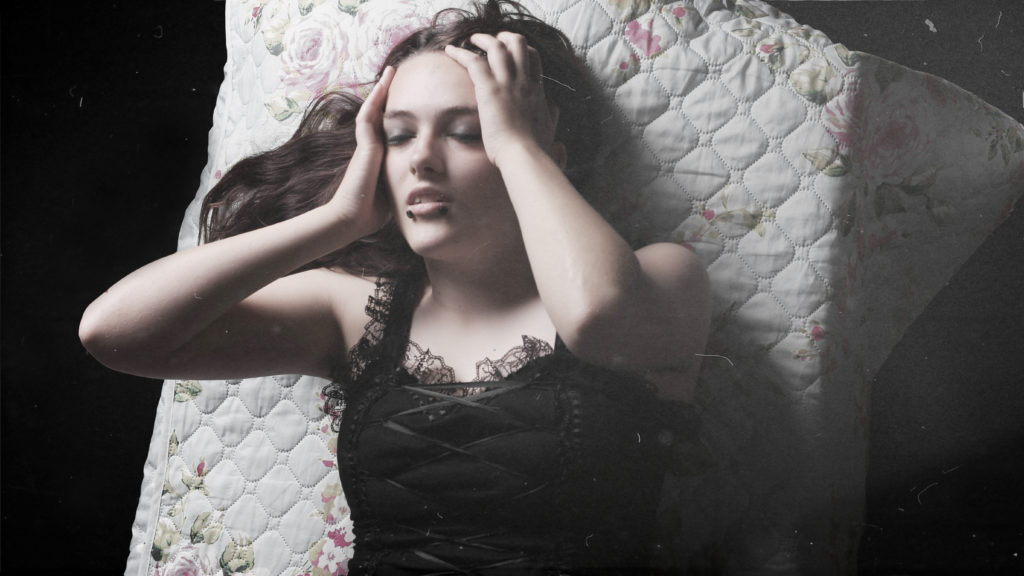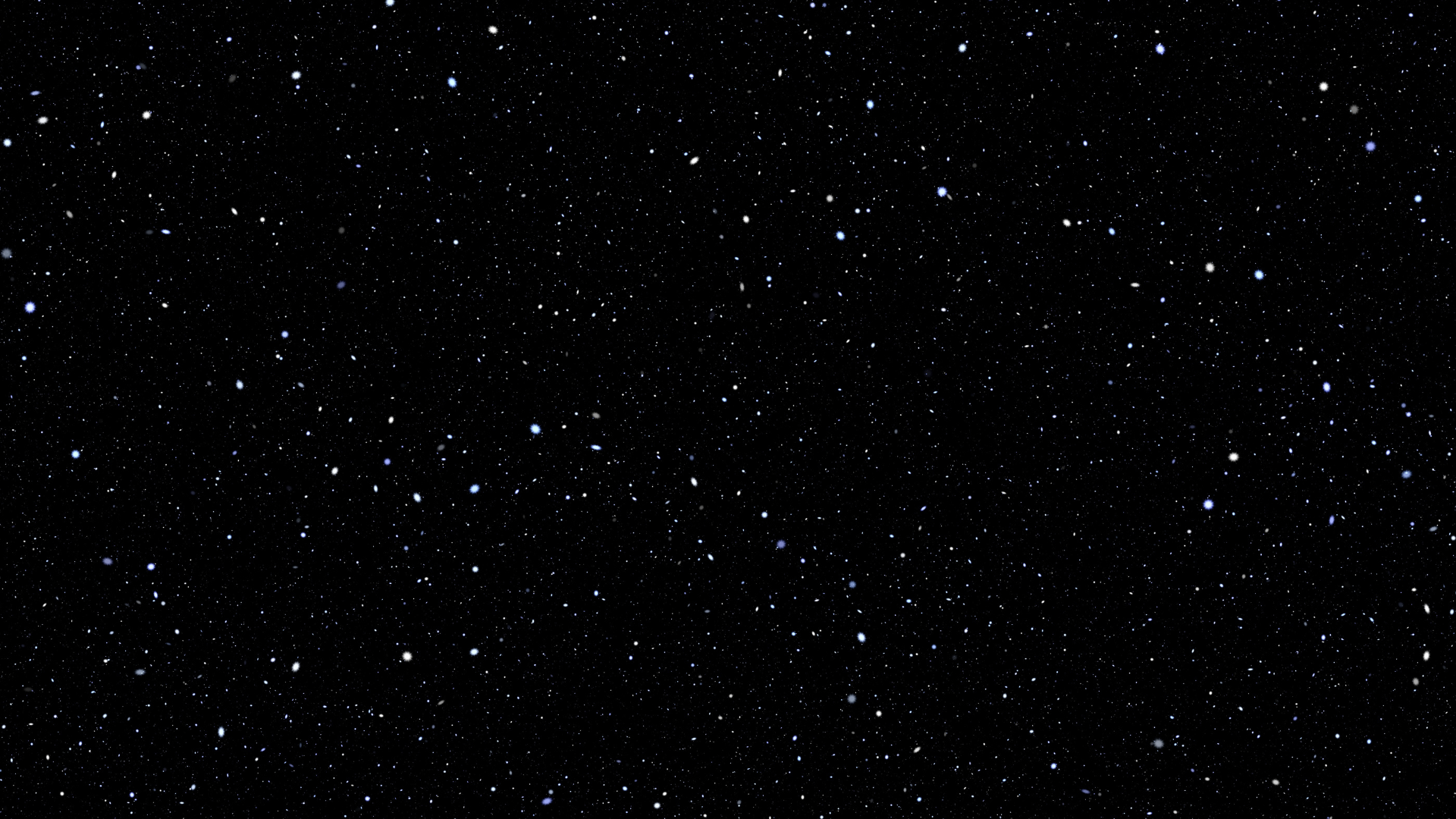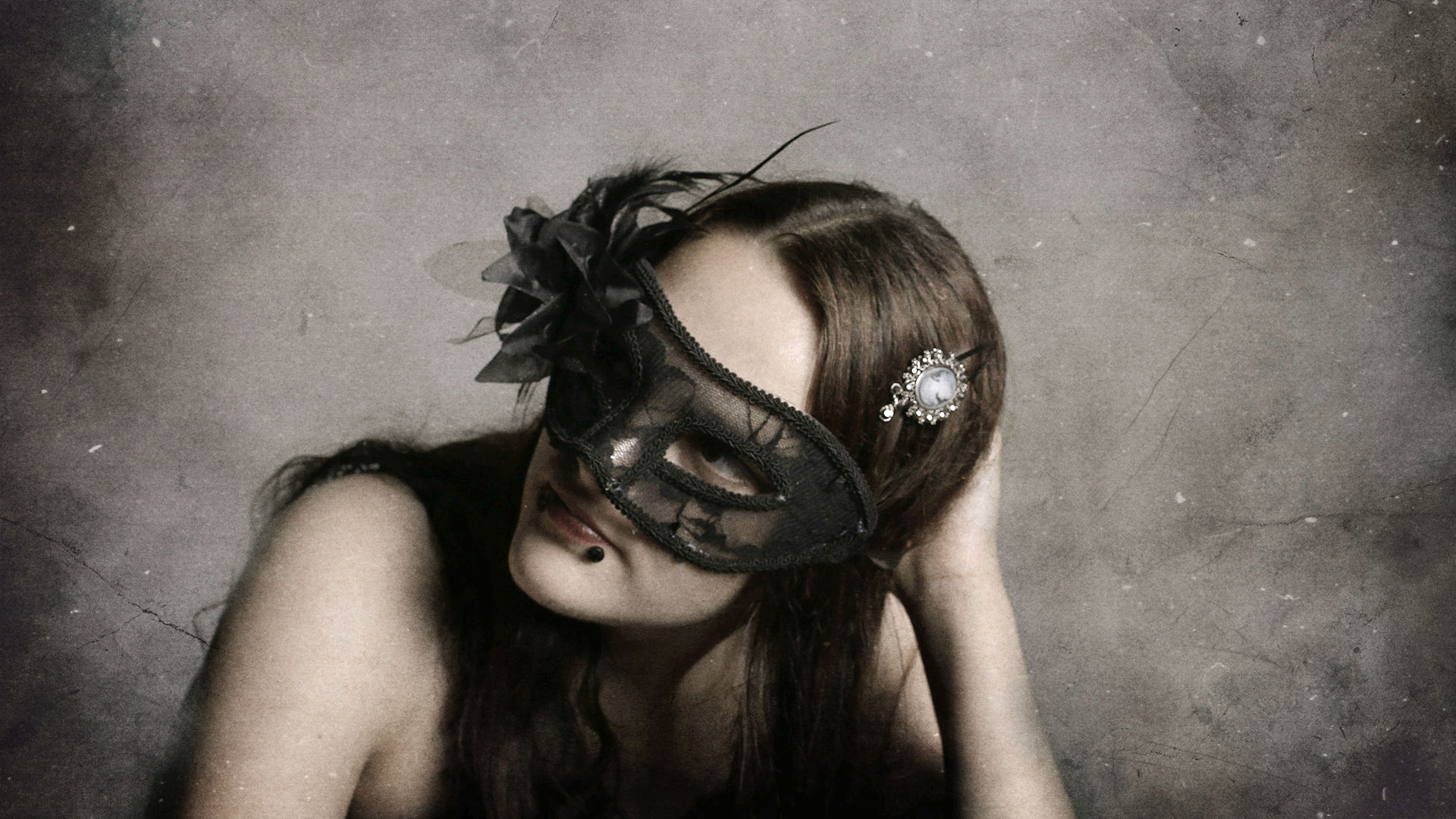Diana Marin’s photographic project, Requiem for the Awakening, is a postmodern audio-visual trip, visual poetry constructed primarily from still photographs, a few moving image moments, and piercing, post-modernist monologue. Her activity included single-handedly editing, photographing, filming, as well as recording sound and voice-over to crystallise a concept that was inspired by her own dream experience. One morning in her previous home city, during a time when days were seamlessly, furtively blending into nights, Diana was immersed into a dream of an uncanny afterlife, in which the dimension of temporality became absurd. It was a special type of dream within a dream, evocatively described through the voice-over in her Requiem.
The fantasy-style digital manipulation is present throughout many images, with some particularly memorable ones featuring surreal compositions: the stormy skies surrounding the woman’s body embraced by tree branches, the woman with a grandiose pose standing behind what looks like a glass case followed by a shot of the graves with a similar layout, the Gothic images of Lilith guarded by her shadow, the elegant yet decaying decor in which she finds herself in the last tableaux.
Each “chapter” of the story contains conscious literary, artistic, photographic, philosophical, and cinematic allusions and influences in its depiction. The prologue, describing an ambiguous post-mortem state, summons up scenarios of the after life, whilst the strange connection the protagonist – as a disembodied presence traversing the ether- has with her still living brother has an element of unreality to it, and is partly rooted in occultism and the concept of astral plane and astral shells. Visually, the prologue is constructed from digitally altered photographs, created through the technique of digital painting, merging visuals, and adding layers. The first chapter, in which she re-learns how to live, has been inspired by The Enigma of Kaspar Hauser and philosophical contemplation, particularly existentialism and the sense of disorientation characteristic of existential angst. It has a soft, aesthetically pleasing photographic style, somewhat in contrast to the eerie atmosphere and tension. The narrative style and stream-of-consciousness monologue of the second chapter carries echoes of Samuel Beckett’s Not I, combined with dark visuals directly pointing at German Expressionist cinema and Gothic films. The third chapter depicts the act of seeking harmony and purpose in the sanctuary of nature, the shots resembling idyllic paintings before the aesthetic switches to sombre and sinister and the mood becomes ominous once again, which leads us to the fourth and final chapter. In this final collection of photographs, the natural is replaced by the artificial and decaying decor. The atmosphere recalls the debauchery and aesthetic focus of Oscar Wilde’s The Picture of Dorian Gray, as well as being a feminine, photographic re-interpretation of the artificiality of Des Esseintes’ life from Huysmans’ À rebours. The mise-en-scene includes paintings, statues, bottles of wine, female figurines, Gothic fashion items, jewellery boxes, and other aesthetic objects. These painterly photographs reveal the life of an eccentric, solitary aesthete, slowly turning into a still life painting.
A brief description of the concept and a few photographic stills:
Prologue – Purgatory: Lilith lives through a centuries-long dream that she believes is the afterlife. She finds herself in a liminal space, with only one connection to the real world to keep her sane, until everything eventually proves to be designed by her mind.


Chapter I – The awakening: Lilith awakens from the dream and tries to re-learn how to live.

Chapter II – Anxiety: She cannot seem to be able to adjust to life once again. In a stream of consciousness, she re-lives epiphanies from her childhood when she gained acute awareness of her ephemeral condition


Chapter III – Nature escapism: Lilith thinks her environment is a cage, and decides to seek refuge in nature, only to realise she is a living cage. The outer world becomes a reflection of her inner world.




Chapter IV – Refuge in art: The girl turns away from nature and towards the artificial, and eventually, towards art. She reconciles with the idea of death through art, when she becomes art.





Model: Rosie Cochrane
The voice-over:
“On the 19th of July Lilith drifted away from everything that she knew and acquired a post-mortem insight into the world, after the bomb explosion that shattered the hearts of her relatives. She likes to think that she can still reach out to the closest person she knew while alive. Her brother, who was also the first one to find out about her death.
My consciousness is spread across an indefinite area of pulsating matter. I could not tell you whether I’m on another planet, wandering in the ether or lost in my own mind. I can tell you this is neither heaven nor hell. I have been here for a very long time, I couldn’t tell you how long, perhaps years, perhaps centuries
My sanity has relied on this inexplicable connection.
When I realised I had died, although sad, I was also relieved, that I still existed somewhere, even in this confusing state. I never believed in life after death, although I wished for it, as nothingness always frightened me. After a while however, existing like this became wearying.
How can I ever trust my mind and my world again now that I’ve wandered away from reality for what felt like hundreds of years. I’ve been awake for a few days trying to make sense of what happened to me. I can’t fully remember life before the explosion, and my body is finding it very hard to readjust to normality.
Words, voices, spiders crawling on the wall, abnormal shadows with a hundred legs, waiting, waiting waiting for the right moment so they could choke me…I would then be one with the shadows. I used to love the darkness as a kid, wandering in gardens after midnight, sneaking out of the house through that small window; making sure everyone was asleep to avoid punishments. The garden…looking at the stars, knowing from a young age that what I was seeing in the sky may have died a long time ago. Those were astral traces, spectres of something that once was; I wanted to exist I wanted to exist beyond time, beyond space, I wanted to see the beginning of the world and the end of the world at the same time…to understand it. To understand my urge for creation and destruction.
I have to get out of here. everything around me pulsates and feels like it’s about to explode, my heart jumps with every turn. I fear my nightmare is going to replace reality.”
Diana’s Website: dianamarin.com

